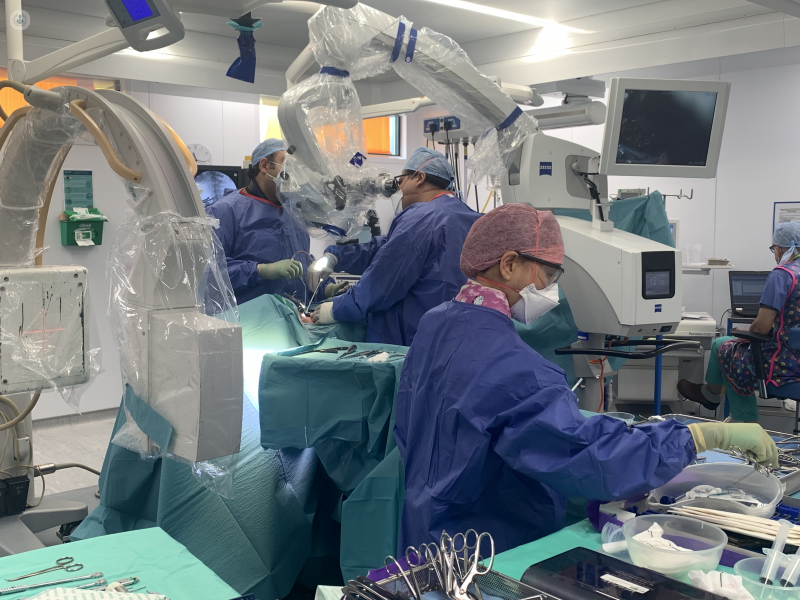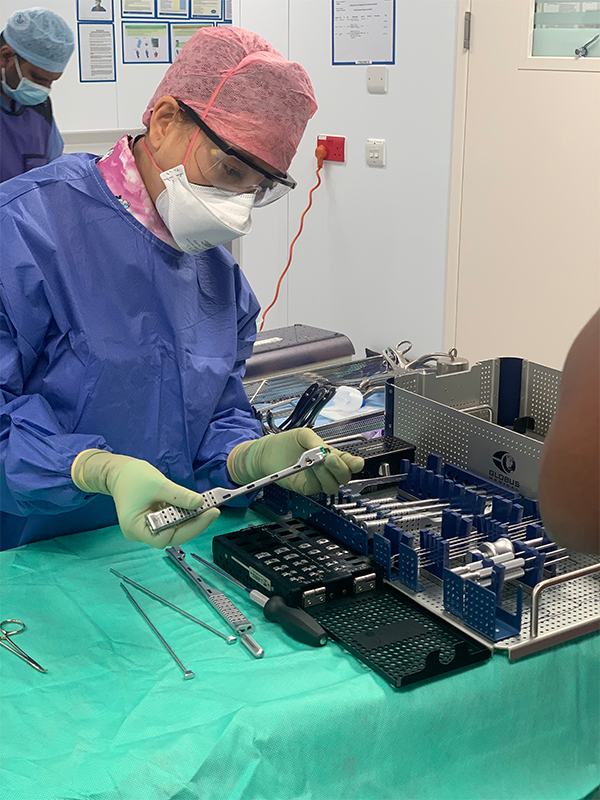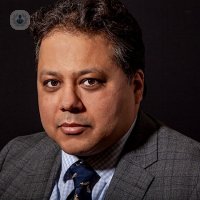Anterior cervical discectomy and fusion (ACDF)
Autore:If you’re suffering from a herniated or damaged disc in your cervical spine, you may be offered an anterior cervical discectomy and fusion. Mr Dimpu Bhagawati explains this surgical procedure, the recovery period and more.

Who can benefit from anterior cervical discectomy?
Anterior cervical discectomy fusion (ACDF) is used to treat people who have a damaged disc in their cervical spine, which can cause problems like a pinching of nerves within the neck. When non-surgical methods (e.g. painkillers, physiotherapy and nerve injections) fail to alleviate the pain, your spinal surgeon may suggest this procedure.
How is anterior cervical discectomy performed?
Anterior cervical discectomy takes place in an operating theatre and the patient is given general anaesthesia, meaning they are fully unconscious during the surgery.
Firstly, the surgeon will make an incision at the front of the neck and will move all the muscles out of the way. We (surgeons) move the muscles because it’s a clever way of reaching the back of the neck and the spine without having to really cut anything.
Then, we very carefully remove the spinal disc. We use very fine surgical instruments to achieve this along with a large microscope to magnify all the structures within the neck. This microscope allows us to avoid key structures within the neck that we really don’t want to damage.
After this, we go all the way to the back of the spine and release the pressure (all the way up to the spinal cord) and release the soft tissues around the area.

Once that’s released, we stabilise the gap we have created by one of two techniques:
- A fusion technique: This involves putting a piece of metal or a piece of plastic in place of the removed disc. This allows the bones to join together and become more stable in the long-term.
- A replacement disc: This replacement is like the disc that was removed and retains some of the motion that the spine had before.
Mr Bhagawati will go through the benefits of both techniques and allow the patient to decide which is preferable for them.
Is ACDF the best procedure for neck pain?
Anterior cervical discectomy fusion has been the standard operation for relieving cervical spine pressure for the last 30 years. Broadly speaking, we can use this in any patient and so, it’s the default option for most patients.
What about a replacement disc?
Cervical disc replacement is more often used for young and fit people. This is because their disc heights are an appropriate size and they most likely won’t have a severe degree of pressure in the neck. It has an advantage over ACDF because it maintains more motion.
Older patients, however, are more likely to have pressure on the spinal cord. As a result, they are more suited to anterior cervical discectomy fusion which creates more stability. In elderly patients with a lot of wear and tear in their spine, the affected disc has collapsed to an extent where the replacement can’t be inserted.
Overall, the objective is to personalise treatment to each patient’s health and what they want.
Can symptoms reoccur after surgery?
In some cases, symptoms can reoccur. This is because the problem can reoccur in a disc above or below the operated disc. The back is made of 33 bones and between each one there is a disc – any of these can be worn and affect nerves over time.
What does recovery from anterior cervical discectomy fusion involve?
In most people, surgery involves an overnight stay and the wound takes around a week or two to heal. I like to use dissolvable stitches, which means there is no need for stitches to be removed.
I see patients again six to eight weeks later, but I advise all my patients to see their GP two weeks after ACDF to check their wound is completely fine, which it usually is.
Most patients don’t need a lot of physiotherapy after surgery. They will instead experience early and effective pain relief. For those who still have neck pain after surgery, I will refer them to physiotherapy but again, most people recover quickly.
Discover how you can benefit from Mr Bhagawati’s first-class, professional and personalised patient care – visit his profile.


